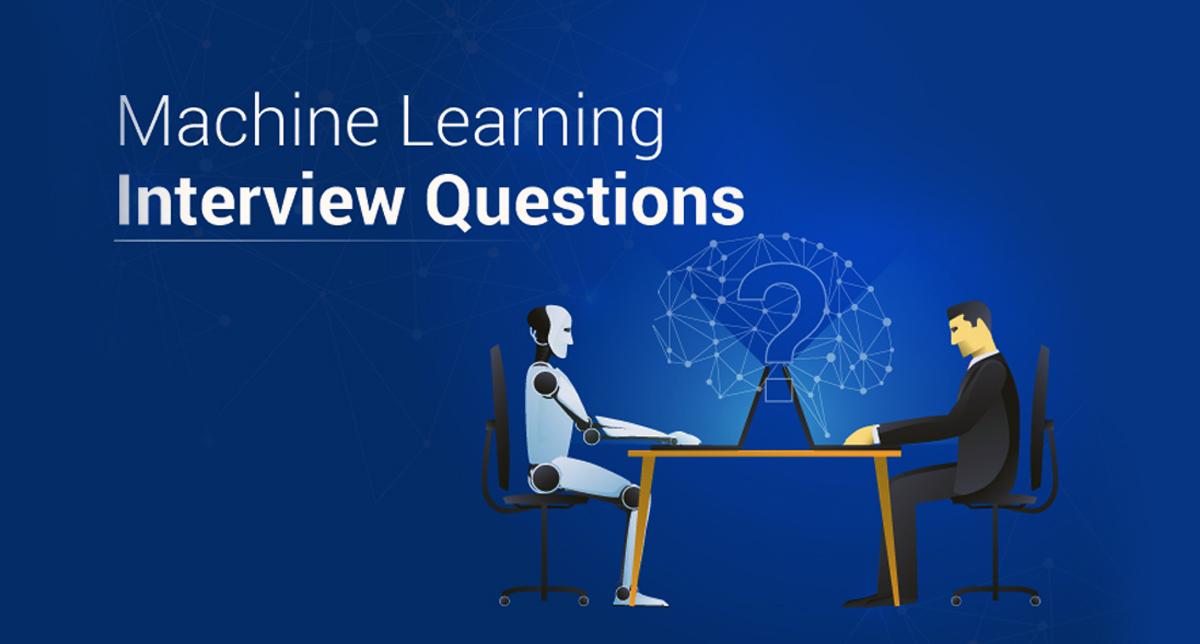Section 1: Introduction — Why ML Security Is Suddenly in Focus
If there’s one area of machine learning that has exploded in relevance and yet remains overlooked by many candidates it’s security. As the global dependence on ML models intensifies, machine learning security has shifted from a theoretical discussion to a frontline engineering challenge. In 2025, recruiters at companies like Google, Meta, and OpenAI aren’t just asking how well you can optimize models; they’re asking how well you can protect them.
Traditionally, ML interviews have focused on model design, optimization, and deployment. But the rise of adversarial attacks, data poisoning, and model inversion has changed that. In a world where a single malicious input can compromise a production model, security literacy has become as important as model accuracy.
From chatbots being manipulated through prompt injection to recommender systems leaking sensitive data, ML vulnerabilities are no longer abstract, they’re affecting real users and billion-dollar companies. And yet, most engineers preparing for ML interviews don’t expect to be quizzed on security.
That’s changing fast.
Today’s recruiters are looking for engineers who can:
- Recognize when a model is vulnerable to adversarial input.
- Understand how data governance and model integrity intersect.
- Build systems that can detect and recover from malicious manipulation.
As highlighted in Interview Node’s guide “Mastering ML System Design: Key Concepts for Cracking Top Tech Interviews”, FAANG recruiters increasingly test how engineers think beyond model performance — toward reliability, fairness, and resilience. Security awareness is a direct extension of this mindset.
For candidates, this means it’s no longer enough to ace coding and algorithm rounds. You must be able to discuss:
- How to defend a model from inference attacks.
- How to validate datasets against injection attempts.
- How to respond to an ML system breach during deployment.
These aren’t trick questions, they’re becoming standard.
The goal of this guide is to prepare you for exactly that. We’ll walk through the hidden side of ML interviews that even seasoned candidates overlook, where technical depth meets strategic foresight. By the end, you’ll understand not only the kinds of security questions interviewers are asking, but also how to respond with confidence, clarity, and context.
Because in 2025 and beyond, ML interviews won’t just test how smart your models are.
They’ll test how secure they are.
Section 2: Why Security in ML Matters More Than Ever (2025 Landscape)
The evolution of machine learning security mirrors the evolution of the broader tech ecosystem. In its early days, ML was seen primarily as an innovation frontier, a way to build intelligent products faster. But as these systems began making financial, medical, and even legal decisions, their vulnerabilities started to carry real-world consequences.
Fast forward to 2025, and ML security has emerged as a critical hiring priority across industries. Whether you’re applying for an ML engineering role at a FAANG company or a fast-growing AI startup, interviewers expect candidates to understand not just how to build models, but how to safeguard them.
a. The New Attack Surface of AI Systems
Every ML pipeline from data ingestion to model serving introduces new attack vectors. Traditional software security principles still apply, but ML adds an entirely new layer of complexity.
Common threats include:
- Data Poisoning: Attackers inject malicious samples during training to manipulate outcomes.
- Model Inversion: Hackers reverse-engineer the model to extract training data.
- Adversarial Attacks: Small perturbations to input data cause massive output errors.
In 2024 alone, several published security papers revealed how large language models could be exploited through “prompt injection” to leak sensitive data or override system rules a reminder that AI is only as secure as its inputs.
b. The Real-World Stakes
The stakes aren’t academic anymore. A tampered ML model can:
- Misdiagnose a patient in a healthcare system.
- Misclassify fraudulent transactions in finance.
- Recommend harmful or biased content in social platforms.
When such vulnerabilities hit production, the fallout extends beyond code, it hits user trust, brand reputation, and compliance exposure.
That’s why companies like Google, Meta, and Amazon now include security-based ML questions in interviews. As one senior Google ML recruiter noted in 2025:
“We don’t just hire people who can build models; we hire people who can protect them.”
c. The Expanding Scope of Interview Expectations
This security focus isn’t isolated to specialized “AI safety” teams. Even core ML engineering roles increasingly test candidates on how they’d:
- Detect anomalous data patterns in production.
- Design retraining pipelines resilient to data drift or injection.
- Integrate ethical AI and governance checks.
In other words, security awareness is now a core engineering competency, not an optional specialization.
As highlighted in Interview Node’s guide “FAANG ML Interviews: Why Engineers Fail & How to Win” , the next wave of ML interviews is about demonstrating systems thinking — understanding how data, infrastructure, and people intersect in real-world systems. Security fits right at that intersection.
Key Takeaway
Machine learning systems have become mission-critical and so have their vulnerabilities. In 2025, the engineers who stand out in interviews will be those who treat ML models not just as predictive engines, but as assets that must be secured, monitored, and defended.
Section 3: Common ML Security Vulnerabilities Every Engineer Should Know
Before you can ace ML security interview questions, you need to understand the real vulnerabilities that threaten today’s machine learning systems. Unlike traditional software bugs, these weaknesses often stem from data integrity, model exposure, and pipeline complexity, areas that many engineers overlook.
Security questions in ML interviews increasingly test whether candidates can recognize and mitigate these risks. Let’s break down the most common ones.
a. Data Poisoning — The Trojan Horse of ML Systems
This attack occurs when malicious data is injected into the training set, subtly influencing the model’s behavior. For example, a poisoned image dataset might train a vision model to misclassify specific objects under certain conditions.
Interview Tip:
You might be asked:
“How would you detect or mitigate data poisoning in a real-world ML pipeline?”
Sample answer:
Discuss techniques like data validation filters, statistical anomaly detection, and using differentially private training to reduce sensitivity to outliers.
b. Adversarial Attacks — Fooling the Model Intentionally
Adversarial examples are inputs intentionally crafted to cause misclassification. These can be tiny pixel changes that make a self-driving car’s vision model mistake a stop sign for a yield sign.
Interview Tip:
Expect a question like:
“How would you defend an ML model against adversarial inputs?”
Mention strategies such as adversarial training, gradient masking, or defensive distillation.
c. Model Inversion — Extracting Training Data from Models
This attack reconstructs or infers sensitive training data by analyzing model outputs. For example, an attacker could infer details about individuals in a health dataset by querying the model repeatedly.
Mitigation Strategies:
- Apply output perturbation or differential privacy to predictions.
- Limit API exposure by rate-limiting model access.
d. Membership Inference — Guessing Who’s in the Dataset
Here, attackers try to determine whether a particular data point was part of the training set. This can expose user privacy in sensitive domains like healthcare or finance.
Defensive techniques include regularization, dropout, and data augmentation, which reduce model overfitting and make it harder to infer training membership.
e. Model Stealing — Replicating a Model via Query Access
If a company exposes its model through a public API, attackers can collect input-output pairs to recreate a similar model. This is especially common in NLP and CV systems.
Defenses:
- Use query throttling and watermarking in responses.
- Employ distillation-resistant architectures that obscure model internals.
f. Supply Chain and Deployment Vulnerabilities
Finally, ML systems can be compromised before deployment through tampered dependencies or exposed APIs. Engineers should know how to apply container security, dependency scanning, and CI/CD hardening.
As highlighted in Interview Node’s guide “ML Job Interview Prep: InterviewNode’s Proven System”, elite candidates stand out when they can discuss not only algorithms but also the security hygiene of ML infrastructure.
Key Takeaway
ML models introduce unique and evolving vulnerabilities that require proactive defense. In interviews, showcasing familiarity with these attack types and explaining how you’d mitigate them — signals maturity, awareness, and system-level thinking.
Section 4: The Security Angle in Modern ML Interviews
Not long ago, the phrase “security in ML interviews” would have sounded out of place. Candidates expected questions on model accuracy, bias mitigation, or scalability, not cyber threats or adversarial robustness. But as machine learning becomes embedded in critical infrastructure, recruiters now assess how engineers think about security holistically.
This change reflects a broader industry realization: a technically brilliant model that can be easily manipulated or compromised is a liability, not an asset.
a. Why Recruiters Are Asking ML Security Questions Now
In 2025, every major AI company has faced a form of model misuse or vulnerability exposure. For instance:
- A public chatbot that leaked private data.
- A recommendation engine manipulated by fake user behavior.
- A vision model fooled by adversarial examples.
These incidents have made companies rethink how they hire. Recruiters now want engineers who can:
- Identify risks before deployment.
- Integrate security principles into data and model pipelines.
- Collaborate effectively with security teams.
As highlighted in Interview Node’s guide “Unspoken Rules of ML Interviews at Top Tech Companies”, FAANG interviewers increasingly test cross-functional awareness, can you think like a product owner, a data scientist, and a security engineer simultaneously?
b. Where Security Appears in the Interview Loop
ML security concepts can appear in multiple rounds:
- System Design Round:
“Design an ML pipeline that resists data poisoning.”
Recruiters look for candidates who add monitoring layers, anomaly detection, and role-based data access. - Behavioral Round:
“Tell me about a time you identified a production risk others missed.”
Here, the focus isn’t technical, it’s about accountability and foresight. - Applied ML Round:
“How would you test the robustness of your model against adversarial attacks?”
Your answer should touch on both algorithmic defenses and practical validation strategies.
In short, security is woven throughout, not isolated to one round.
c. What Interviewers Really Want to See
Security questions don’t aim to trick you, they reveal whether you think beyond model training. Interviewers are evaluating:
- Systems thinking: Can you visualize where vulnerabilities appear?
- Proactive mindset: Do you anticipate attacks or only react to them?
- Communication clarity: Can you explain risks to non-technical stakeholders?
In top-tier interviews, demonstrating these qualities can differentiate a “strong hire” from an “average candidate.”
d. How to Spot a Security Question in Disguise
Sometimes, the question won’t explicitly mention security. Examples include:
- “How would you monitor an ML model post-deployment?” (They’re testing awareness of model drift and anomaly detection.)
- “How would you handle model retraining with new user data?” (They’re checking your data validation and access control habits.)
Recognizing when a generic-sounding question hides a security dimension is a mark of a seasoned ML engineer.
Key Takeaway
Modern ML interviews are no longer just about intelligence — they’re about resilience. The candidates who can blend algorithmic expertise with security intuition stand out as engineers capable of protecting systems at scale.
Section 5: Top 10 Unexpected ML Security Interview Questions
One of the reasons ML security questions are so effective in interviews is because most candidates don’t prepare for them. They’re not the typical “implement logistic regression” or “design a recommendation system” questions you find on LeetCode or Kaggle. Instead, they test depth of thought, practical awareness, and defensive reasoning.
Here are ten unexpected yet increasingly common ML security questions — along with what interviewers are really looking for when they ask them.
a. “How would you detect data poisoning in your training pipeline?”
This question evaluates your understanding of data validation and anomaly detection. Interviewers expect you to mention:
- Statistical outlier detection.
- Model performance monitoring across data subsets.
- Manual audits and dataset versioning.
💡 Pro tip: Emphasize using tools like TensorFlow Data Validation (TFDV) or Great Expectations for automated checks.
b. “What are adversarial examples, and how can you defend against them?”
They’re testing your knowledge of robust ML techniques. Discuss adversarial training, gradient masking, and regularization.
- Bonus: Mention that no defense is foolproof , constant retraining and red-teaming are essential.
c. “If your deployed model suddenly produces strange outputs, how would you investigate?”
This probes your incident response mindset. Talk about:
- Logging and version tracking.
- Monitoring for distribution drift or data injection.
- Rolling back to a safe model checkpoint.
d. “How would you prevent model theft through your public API?”
Recruiters want to see if you understand model stealing attacks.
Suggested mitigations:
- Rate limiting and authentication.
- Output watermarking.
- Limiting prediction granularity (e.g., probability rounding).
e. “Can you explain model inversion and how to mitigate it?”
This question checks whether you know privacy risks in model serving.
Mention:
- Differential privacy.
- Output perturbation.
- Secure model hosting protocols.
f. “How can you detect adversarial inputs in real time?”
Interviewers test your applied knowledge of runtime defense.
Possible solutions:
- Ensemble-based anomaly detection.
- Input preprocessing (denoising).
- Adversarial detectors trained on perturbed examples.
g. “What role does encryption play in ML model security?”
This tests your understanding of secure ML frameworks.
Mention:
- Homomorphic encryption.
- Federated learning (for distributed privacy).
- Secure enclaves for model inference.
h. “How would you design a secure retraining pipeline?”
Recruiters want to see MLOps awareness.
Your answer should cover:
- Version control of data and models.
- Human-in-the-loop validation.
- Automated security testing before deployment.
i. “How do you balance explainability and security?”
Some interpretability tools (e.g., SHAP, LIME) can reveal sensitive patterns.
Demonstrate maturity by saying:
“Transparency is critical, but I would ensure explainability tools are deployed internally, not via public APIs.”
j. “If an attacker slightly modifies your dataset, how could you identify that?”
Here, they’re testing forensic thinking. Discuss:
- Hash-based data integrity checks.
- Metadata tracking for all dataset entries.
- Comparing data embedding distributions before and after retraining.
As highlighted in Interview Node’s guide “Top ML Interview Questions for 2025: Expert Answers” , the questions that truly differentiate candidates today are those testing judgment, not memorization. ML security falls squarely into that category.
Key Takeaway
You can’t memorize answers to ML security questions, you have to understand the principles. Interviewers are looking for engineers who think like defenders: those who anticipate threats, balance trade-offs, and build trustworthy systems from the start.
Section 6: How to Prepare for Security-Related ML Interview Rounds
Preparing for security questions in ML interviews isn’t about memorizing buzzwords, it’s about developing a defensive engineering mindset. Recruiters want to see that you not only understand model architecture but can also think critically about how it might fail under attack.
The good news? You can systematically build this awareness with the right preparation strategy.
a. Learn the Core Threat Models
Start by familiarizing yourself with the taxonomy of ML security risks. Most questions trace back to one of these categories:
- Data-level attacks (poisoning, injection, leakage)
- Model-level attacks (inversion, adversarial examples, model theft)
- Pipeline-level vulnerabilities (CI/CD tampering, API exposure)
Focus on understanding how these attacks work and how you’d detect them in production.
A good starting point is reading recent papers from arXiv’s ML security section or Google’s AI Red Team blog.
b. Integrate Security into Your ML System Design Prep
Security is often tested implicitly during system design interviews. Instead of focusing solely on scalability and latency, practice adding security layers:
- Role-based data access.
- Validation steps in training pipelines.
- Drift detection and rollback mechanisms.
Interviewers love candidates who mention proactive monitoring and incident response planning.
As explained in Interview Node’s guide “Mastering ML System Design: Key Concepts for Cracking Top Tech Interviews” , FAANG engineers are expected to design systems that are not only efficient but resilient.
c. Practice Red-Teaming Your Own Models
One of the best ways to internalize ML security is to attack your own models.
- Try generating adversarial examples against your own classifiers.
- Simulate data poisoning using mislabeled samples.
- Analyze model predictions for potential leakage.
Platforms like CleverHans, Adversarial Robustness Toolbox (ART), and Foolbox are great for hands-on experimentation.
Doing this not only builds intuition, it gives you tangible projects to discuss in interviews.
d. Build a “Security Lens” into Everyday ML Practice
As you train models, ask yourself:
- Could someone manipulate my training data?
- Could predictions leak sensitive information?
- How would I detect if my model was being exploited?
This habit helps you answer open-ended questions confidently because you’ve practiced thinking defensively from the start.
e. Pair AI Tools with Expert Feedback
AI mock interviews can now simulate ML security rounds, providing structured feedback. But remember, human coaches or peers can add context and industry nuance.
As emphasized in Interview Node’s guide “From Interview to Offer: InterviewNode’s Path to ML Success”, hybrid preparation, AI-driven practice plus expert feedback, consistently yields better results.
Key Takeaway
Security preparation is less about memorization and more about mentality. You need to think like both an engineer and an attacker, understanding not only how to build systems but how to protect them.
By weaving security awareness into your daily ML prep, you’ll stand out in interviews as a forward-thinking, full-stack ML engineer.
Section 7: Real-World Examples — Security Failures in ML Systems
Understanding ML security conceptually is one thing — but seeing how it fails in real life is what truly drives the lesson home. Over the past few years, multiple high-profile incidents have exposed just how fragile modern AI systems can be when security isn’t baked in from the start.
These real-world examples are often cited by interviewers at FAANG companies to test whether candidates can translate theory into practice. Let’s explore a few of the most notable ones.
a. Adversarial Examples in Autonomous Vehicles
In one of the most well-documented cases of ML vulnerability, researchers found that adding small stickers or paint patterns to stop signs could cause self-driving cars to misclassify them, reading “stop” as “speed limit 45.”
This wasn’t a software bug, it was a model perception flaw. The ML system had learned brittle visual features, making it easy to fool.
Interview takeaway:
When asked how you’d secure an ML model in safety-critical environments, mention adversarial training, input normalization, and redundant sensor validation (e.g., combining vision and LIDAR).
b. Model Inversion in Healthcare ML Models
In 2023, a research team demonstrated that by querying a medical ML model multiple times, they could reconstruct sensitive patient data from its predictions, a phenomenon called model inversion.
This exposed a major privacy risk: even anonymized datasets can leak information if the model itself becomes a data oracle.
Interview takeaway:
Mention differential privacy, output perturbation, and restricted query access as safeguards.
c. Data Poisoning in Content Recommendation Systems
In another real-world case, a social media company discovered that malicious actors were poisoning its recommendation system by feeding it misleading engagement data. The result: certain harmful or biased content was amplified by the algorithm.
Interview takeaway:
If you’re asked how to prevent data poisoning, discuss robust data pipelines, input validation, and continuous retraining monitoring.
d. Prompt Injection in LLM-Powered Tools
Perhaps the most recent and rapidly evolving form of ML attack is prompt injection, where adversaries trick large language models into ignoring their instructions or leaking private data.
For instance, an attacker could embed a hidden prompt in a webpage that causes an LLM-based assistant to reveal confidential system information when summarizing it.
Interview takeaway:
Highlight content sanitization, context-aware filtering, and strict isolation of external inputs.
e. Model Stealing in Cloud ML APIs
In 2024, researchers cloned a commercial image classification API by repeatedly querying it and training a replica model on the outputs, an example of model stealing. The company’s proprietary model architecture was effectively reverse-engineered through its own API.
Interview takeaway:
Discuss API rate limiting, output watermarking, and usage monitoring as prevention strategies.
As highlighted in Interview Node’s guide “FAANG ML Interview Crash Course: A Comprehensive Guide to Cracking the Machine Learning Dream Job” , interviewers love real-world examples because they reveal whether a candidate can connect abstract concepts to practical implications.
Key Takeaway
These case studies remind us that ML models don’t just fail technically, they fail securely. The best candidates demonstrate awareness of these failures and can articulate how to design systems that learn not just efficiently, but safely.
Section 8: Conclusion — ML Security as the New Interview Frontier
Machine learning security has quietly become one of the most strategic differentiators in hiring for 2025 and beyond. It’s no longer just a subtopic in academic research, it’s a core skill expected of engineers building production-grade systems at scale.
For ML engineers, this shift means that interview success now depends on both innovation and defense. Recruiters aren’t only evaluating how efficiently you train a model; they’re judging how responsibly and securely you deploy it.
AI-driven products today influence banking transactions, healthcare diagnostics, and global communications. A single vulnerability, a poisoned dataset, an exposed endpoint, or a misaligned LLM prompt, can ripple through millions of users.
That’s why companies like Google, OpenAI, and Meta are deliberately raising the bar. They’re looking for engineers who embody the “secure-by-design” mindset, people who consider data integrity, privacy, and robustness from day one.
As emphasized in Interview Node’s guide “FAANG ML Interviews: Why Engineers Fail & How to Win”, the engineers who stand out aren’t just the fastest coders; they’re the ones who understand systems holistically — data, deployment, and defense together.
So as you prepare for your next ML interview, think beyond accuracy metrics. Ask yourself:
- How can I validate my data before training?
- What happens if someone manipulates my input?
- How resilient is my pipeline to noise, drift, or attack?
Those who can answer these questions confidently aren’t just ML engineers, they’re ML guardians. And in today’s landscape, that’s exactly who the best companies want to hire.
Frequently Asked Questions (FAQs)
1. Why is ML security becoming such a hot topic in 2025?
Because ML systems are now mission-critical, powering finance, healthcare, and autonomous systems. A security flaw can cause not just data breaches, but physical or ethical harm.
2. What kinds of security questions do FAANG companies ask?
Expect scenario-based questions like:
- “How would you detect data poisoning?”
- “What’s the trade-off between explainability and privacy?”
- “How can you prevent model theft from APIs?”
These questions assess risk awareness and mitigation strategy.
3. Do I need cybersecurity experience to answer ML security questions?
No, but you should understand how ML-specific vulnerabilities differ from traditional security risks. Focus on data integrity, model robustness, and privacy.
4. Which tools should I know to prepare for ML security interviews?
- Adversarial Robustness Toolbox (ART)
- CleverHans
- TensorFlow Privacy / PyTorch Opacus
- Federated Learning frameworks (TensorFlow Federated, PySyft)
These show hands-on familiarity with model protection and evaluation.
5. What’s the difference between adversarial attacks and data poisoning?
- Adversarial attacks happen after training, crafted inputs fool deployed models.
- Data poisoning happens before or during training, corrupt data alters model behavior.
6. How can I defend against adversarial examples?
Use adversarial training, input pre-processing, and ensemble models for robustness. Also consider adding anomaly detectors in production to flag malicious inputs.
7. What is model inversion and why is it dangerous?
Model inversion extracts sensitive data (like patient records) from trained models. It compromises privacy and compliance — especially under GDPR or HIPAA regulations.
8. How do I show ML security awareness in behavioral interviews?
Share examples like:
“I implemented a validation pipeline to detect mislabeled data that could bias our model.”
Show that you think proactively about data hygiene and ethical responsibility.
9. How do prompt injection attacks affect LLMs?
They manipulate model instructions through malicious text inputs. Defenses include context filtering, sanitizing user prompts, and limiting model memory access.
10. What are some red flags interviewers look for?
- Overconfidence in model robustness.
- Ignoring post-deployment security.
- Treating privacy as an afterthought.
These signal that a candidate lacks production maturity.
11. How do I integrate security checks in my ML workflow?
Add checkpoints for:
- Data validation.
- Model testing under noise/adversarial stress.
- Continuous monitoring for drift and anomalies.
These habits demonstrate defensive engineering.
12. What is differential privacy and why is it important?
It adds controlled noise to data or outputs to ensure individual privacy protection while preserving aggregate patterns. Companies like Apple and Google rely heavily on this for compliance.
13. How can I prepare for security system design questions?
Practice designing end-to-end ML pipelines with secure data ingestion, validation, and deployment. Mention role-based access control, model versioning, and CI/CD scanning during your answer.
14. What role does explainability play in ML security?
Explainability helps detect anomalies or bias but can also reveal model behavior. Balance transparency with confidentiality, use internal dashboards rather than public APIs for interpretability.
15. How can I stand out as a candidate in this area?
Work on projects that integrate security with ML, such as:
- Building a privacy-preserving recommendation system.
- Demonstrating adversarial robustness testing.
- Writing a blog on ethical ML vulnerabilities.
These showcase real-world initiative, the hallmark of top candidates.
Final Takeaway
Machine learning security isn’t just a niche — it’s the next frontier in AI reliability. In interviews, it’s where technical excellence meets ethical accountability. The candidates who understand this dual responsibility, to innovate and to defend — will lead the next generation of ML engineering at FAANG, OpenAI, and beyond.
Because in tomorrow’s job market, “secure models” won’t just be a buzzword, they’ll be the foundation of trust in AI itself.






